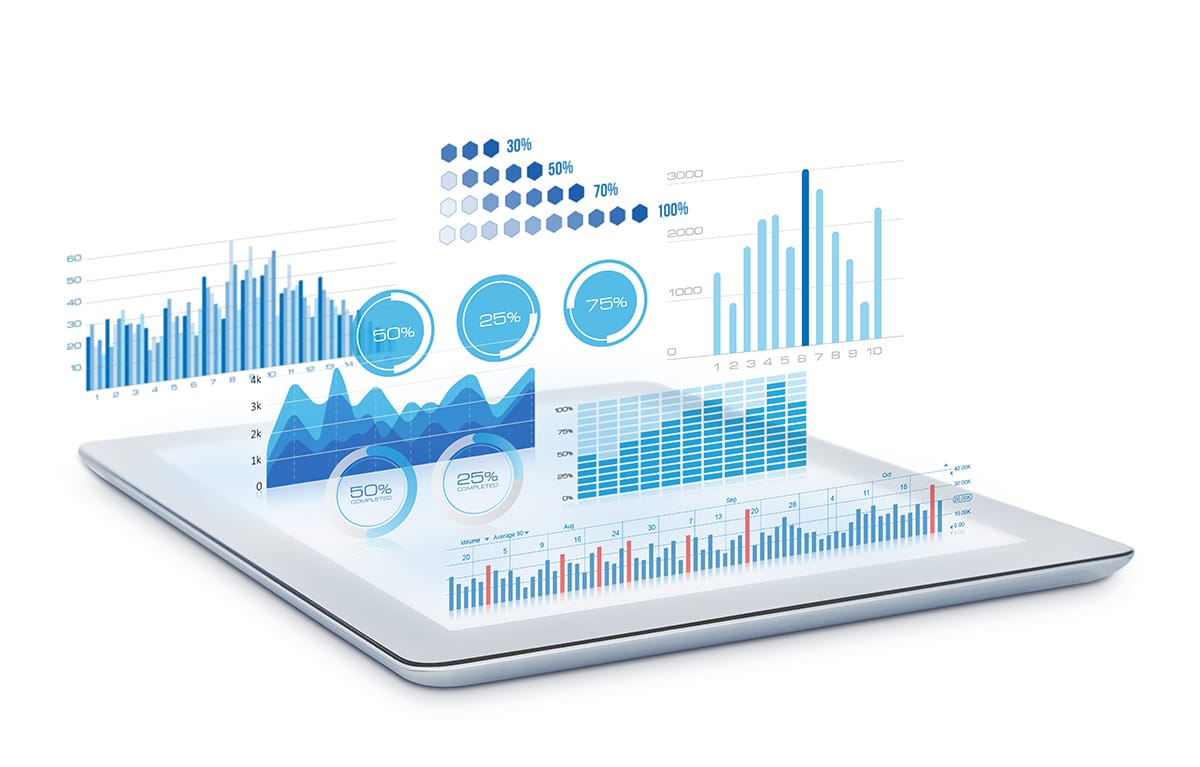
This course will help you choose from a range of statistical procedures to analyse your data. What makes this course unique is that it is suitable for those with no prior knowledge of statistical software. You will learn how to:
- Familiarize yourself with basic statistical concepts: Before diving into more complex statistical procedures, it's important to have a solid understanding of basic statistical concepts such as mean, median, mode, standard deviation, correlation, and regression. We will make sure you are comfortable with these concepts before moving on to more advanced techniques.
- Practice with real-world examples: We use real-world examples of statistical procedures in action. This will help you understand how these procedures are used in practice and how to interpret their results.
- Use software to run statistical procedures: The course may be taken with Jamovi, a free statistical package, or SPSS.
- Collaborate with others: Collaborating with others who are also learning statistical procedures can be a great way to learn and reinforce your understanding of the material. You can work together to solve problems and discuss different approaches to analysing data.
Remember that learning statistical procedures takes time and practice, so don't get discouraged if you don't understand everything right away
This course will be run over 5 days in three sessions per day:
- 10.00am - 11.30pm - Sessions 1
- 12.00pm - 1.30pm - session 2
- 2.30pm - 4.00pm - Session 3
Exercises will be provided and Individual consultation sessions will be for 30 minutes to an hour for each participant by appointment.
This course will run on Australian Eastern Standard Time (UTC +10)
ie Canberra, Sydney, Melbourne Brisbane time
Dr Gordon Emmerson is a specialist in quantitative research. He taught undergraduate and postgraduate statistics programs at Victoria University within the Psychology Department, where he currently holds the position of Honory Fellow. He coordinated a major in Social Research Methods. Gordon was employed as a statistical/methods advisor to university staff in the US at Kansas State University in the late 1980s. He is an experienced group facilitator and regularly conducts workshops across a range of topic areas. He is an experienced user of data management and statistical packages including SPSSwin, Excel and Access. He has also undertaken a number of consultancies in quantitative research in the health and education sector.
This course is taught from an applied perspective, with questions encouraged. This is an intermediate, course covering a range of the most commonly used statistical procedures. Research design, Experimental, Quasi-Experimental and Non-Experimental, will be covered so students can select the best design and statistical procedure for a research project, and to clarify exactly what claims can be made in relation to findings. It aims to provide participants with an ability to understand, run and interpret procedures. This course will further enhance your ability to understand research-based literature.
The level falls between ‘Fundamentals of Statistics’, and the more detailed single procedure-based courses. This course will provide a good foundation for progression to the more detailed courses in (Multiple) Regression, Factor Analysis, SEM and Latent Variables using Mplus. On completing this course you should be able to read and understand literature where these procedures are reported, select the appropriate statistical procedure for research, run the procedure, and report the results from an informed base of understanding.
Students may take this course using one of two statistical packages, SPSS or Jamovi. No prior knowledge of either SPSS or Jamovi is required. SPSS is a menu driven large statistical package that many participants may have available through their university or workplace. Jamovi is a free and downloadable package (https://www.jamovi.org). It is a user-friendly menu driven version of R, that is very easy to learn. Demonstrations will include both SPSS and Jamovi and students my use either.
The target audience for this course range from Qualitative researchers wanting to gain Quantitative skills, to Quantitative researchers wanting to broaden their understanding across procedures, or to become more comfortable with covariance prior to taking SEM.
Day 1
The context of quantitative research in relation to qualitative research. The language of quantitative research, and the required fundamentals of SPSS.
Day 2
Reliability, Correlations, Controlling for Confounding Variables, Chi Squares, and T-Tests.
Day 3
ANOVAS, ANCOVAS, Factoral ANOVAS, MANOVAS and Non-Parametric Tests.
Day 4
Simple Regression, Multiple Regression, Discriminate Analysis and Factor Analysis.
Day 5
Testing Normality, Data Transformations, Validity, Reporting and Ethics.
Individual Consultations by appointment
The procedures that will be covered will include the following:
- The frequency based statistics of Chi Square Goodness of Fit and Chi Square Test of Association.
- The Parametric test of difference statistics of T-tests, ANOVA, ANCOVA, MANOVA, and MANCOVA. Factorial analysis with multiple independent variables will also be covered along with Repeated Measures ANOVA.
- The Non-Parametric test of difference statistics of Mann-Whitney, Wilcoxon, Friedmans Analysis of Variance, and Kruskal Wallis.
- The statistics to predict and to explain variance of Simple Regression, Multiple Regression, Discriminant Analysis and Multiple Discriminant Analysis.
- The data reduction technique of Factor Analysis
- Power, the data and statistics that are most powerful, and techniques for increasing statistical power
- How to determine the best procedure for the demands of the research
- Data transformation to increase power and allow parametric procedures to be employed when data can be appropriately adjusted.
- The important interplay between effect size and significance.
- The integration of statistical results into reports.
Training in this course will be for 3 x 1.5 hour sessions per day over ZOOM.
Questions are encouraged. There will be lecture contact, small group practice and workshop time.
Individual consultation sessions will be for 30 minutes to an hour for each participant by appointment.
Participants should have an understanding of elementary statistics equivalent to the syllabus of Fundamentals of Statistics. This course requires students to follow instruction in running and interpreting a range of statistical procedures. It is assumed that participants will have little or no familiarity with at least some of the procedures presented.
Students may take this course using one of two statistical packages, SPSS or Jamovi. No prior knowledge of either SPSS or Jamovi is required. SPSS is a menu driven large statistical package that many participants may have available through their university or workplace. Jamovi is a free and downloadable package (https://www.jamovi.org). It is a user-friendly menu driven version of R, that is very easy to learn. Demonstrations will include both SPSS and Jamovi and students may use either.
The instructor's bound, book length course notes will serve as the course text.
The notes will be sent to your nominated 'shipping address' in advance.
Q: Do I have to have had prerequisites to do this course?
A: Yes, you will have been expected to have some knowledge of elementary statistics equivalent to ACSPRI's Fundamentals of Statistics Course.
Q: Do I need to know SPSS or jamovi?
A: No prior knowledge of SPSS or jamovi is required.
Great balance of theory, demonstrations, worked exercises and chats to help contextualize to real research.
I selected this course to refine and develop my existing statistical knowledge - and this way precisely what occurred. I was able to expand my knowledge to areas of which I was previously unfamiliar. Importantly, Gordon helped me to better understand the areas that I was already familiar with. The resources provided were also top notch.
This was a terrific course. I learned SO much. Gordon explained everything clearly and managed to fit so much content in whilst still making sure that everybody understood the core concepts.
The statistical procedures were clearly explained and applied to practical research questions. All questions were clearly answered.
I really enjoyed the way the course is structured. After the theoretical part, there is always hands on applications of the theory. Really appreciate this.
Gordon has a great way of balancing and explaining complex stats procedures, helping the class apply their knowledge through completing labs.
It helped me brush up on skills I had forgotten but also taught me some new concepts & challenged me in new ways. It was perfect for my knowledge/skill level.
Excellent mix of explanation,written examples, diagrammatic representation of concepts, demonstrated procedures and practical labs. A lot of time allocated to answering questions.
The lecture combined with the hands on lab activities allowed for me to practice what was just learned and that was invaluable.
The individual attention provided - where I could discuss my research data was very useful
Improved my understanding of stats which will help in reading the literature and designing future studies.
It has filled in a lot of gaps in my knowledge. I had used most of the techniques and stats before but never had an understanding of why I used them for different data sets.
The instructor was great the best I have had by far. Great pacing and cover of important tests.
The instructor's bound, book length course notes will serve as the course text.
These will be sent to your nominated 'shipping address' in advance.
